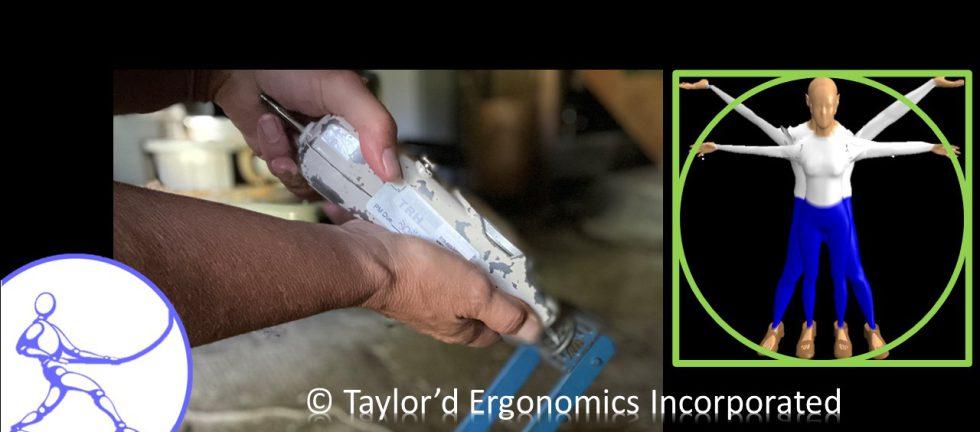(Prefer to “watch” instead of read? Here’s the video: https://youtu.be/43lk-BSmGmI)
At the most basic level, an ergonomist (much like a lifeguard) gets paid to watch people. In our case, we watch people work. Of course, most ergonomists would be insulted at the insinuation that “watch” is all we do, but that’s what people see us doing. We study work. We want to understand it, evaluate it, and improve it. We love work, in all its glory! (We should make t-shirts!)
An ergonomist is a specialist, typically found under a “safety” or “engineering” umbrella. Most of us have a background in kinesiology or engineering, but we all have education specifically in work evaluation and design. We evaluate the fit between a worker and the work environment, and help to make improvements to optimize the worker’s ability to do great work, comfortably.
According to our professional association, the “Association for Canadian Ergonomists”:
“Ergonomists contribute to the design and evaluation of systems in order to make them compatible with the needs, abilities, and limitations of people.”
What does that mean on a day-to-day basis? What do we really do “out there”? Let’s take some specific examples to bring perspective to our job.
In an office environment (typically the first that comes to people’s minds), an ergonomist assists in adjusting the chair, keyboard, screen position, and may provide recommendations for different work practices (“Take micro breaks!” or “Try mousing with your left hand!”) and for different equipment such as a footrest or monitor stand. We crawl under and around the desk, mess with ALL the levers on the chair, and usually rearrange everything on the desk. But the worker is more comfortable when we’re finished.
In a food manufacturing setting, an ergonomist might review the design of a planned line, and suggest an optimum conveyor height, ways to improve forward reach, and locations where clearance under conveyors will be critical. We make suggestions before the equipment is bolted down, and we usually challenge the design team to consider the worker in ways they hadn’t thought about before.
In a chemical environment, an ergonomist might measure and review the effort required to lift a filter or open a hatch, and suggest ways to improve demands that are too difficult for workers to safely manage. (The photo above shows how we measure push force using a gauge.) We may sound like the “voice” of the smallest worker, advocating for changes that will be more inclusive.
In a hospital, an ergonomist might complete a physical and cognitive demands analysis for a housekeeping job, and use it to evaluate the suitability of a job for a specific worker with medical limitations. If the job is not a good match, the ergonomist would help to identify suitable accommodations for the worker, which may involve purchases or assignment changes that a supervisor would need to take care of.
In a multi-site environment where many workers are performing the same type of work (baggage handlers, or heavy equipment operators, as examples), we might work with employees to identify and document the “best” practices, and then develop coaching plans for supervisors to use. We may also create practical training to help all workers to learn the “tricks of the trade” that reduce their risk of injury.
Ergonomists also manage ergonomics programs.
-
- We promote ergonomics awareness through bulletins and other communications, provide training, and run awareness campaigns. Ergonomists are cheerleaders for better “work” practices at home, play and work!
-
- We support implementation by researching products, gathering quotes, drafting work orders, and working with all stakeholders to find and implement solutions that work.
-
- We follow up on recommendations and communicate success stories.
-
- We track projects, recommendations, and project responsibilities and status. We wield the carrot and the stick!
-
- We collaborate with other departments and programs to advance ergonomics throughout the organization. (We poke our noses into departments that have never heard of ergonomics.)
Of course, ergonomists do all of these types of assessments in various environments! A traditional consulting model would not allow us to take on the program management aspects of strain/sprain injury prevention. We are fortunate, as “consulting ergonomists” that many of our clients allow us to act as “ergonomists” rather than “consultants”. And these experiences make us better ergonomists; we fully appreciate the challenges of implementation, and we work hard, alongside our clients, to generate support for ergonomics.


